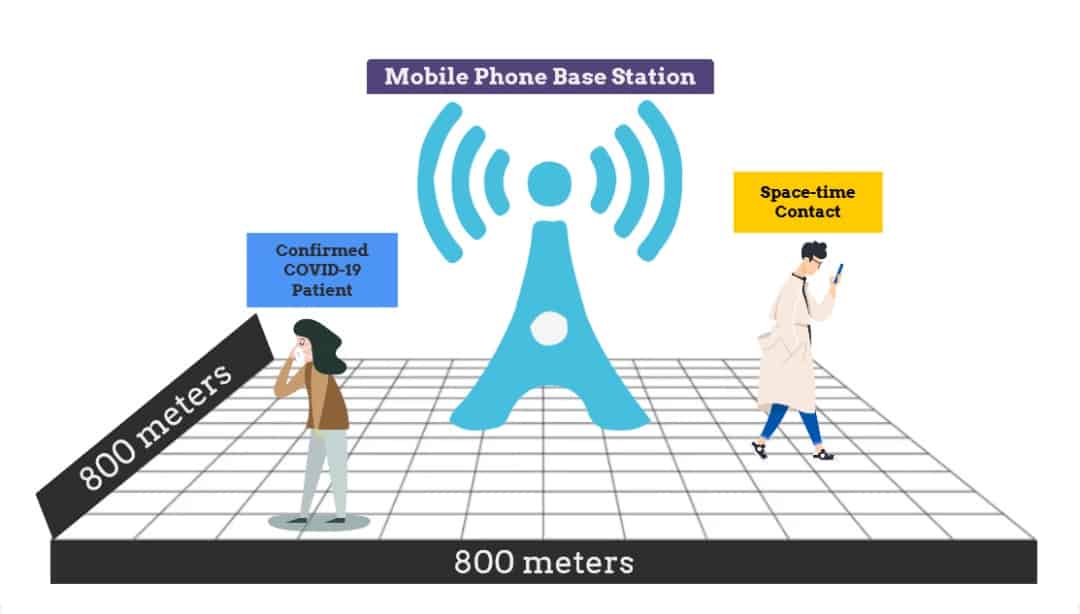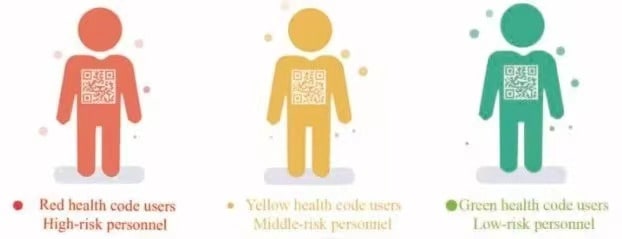时空伴随者: What are the new Health Code rules?
While a green code suggests that the person is ‘healthy’ and can move around the city freely, an orange or red code indicates that the user has medium or high exposure risk and thus needs to self-quarantine (2–14 days). While the orange or red code does not necessarily mean the person has the virus, it suggests that the person has a greater risk of infection.
Previously the Health Code was based on contact with confirmed COVID-19 patients, showing symptoms, or having been to a risk area. The new stricter measures, use your phone’s cell signal to tell where you’ve been somewhere in the same “time and space” as a confirmed case, in the last 14 days. If you (or your phone) have been within 800m diameter of a confirmed case, regardless of whether there is direct or indirect contact, your QR code will likely change to orange. You are now a “time and space companion”.
So this is why, even if you do not live, or work in a risk area – you may have been in the cell-signal 800m, at the wrong time.

Li Menglei, an official from the Henan Center for Disease Control and Prevention, said an epidemiological investigation requires strenuous efforts to pinpoint people who have had contact with a confirmed case. “Space-time contacts” have slightly lower infection risk than close contacts, but higher risk than ordinary risk groups, he said.
According to the national guideline on COVID-19 prevention, close contacts are individuals that have stayed within the same enclosed space as a confirmed case. Though the risk of aerosol transmission of the novel coronavirus in closed spaces has been confirmed, there is not yet definitive conclusion on how transmissible the virus is in the open air.
The tracing method involving “space-time contacts” may not be ideal, but it could be better than conducting city-wide nucleic acid tests, said Jin Dongyan, a virology expert at the University of Hong Kong.

What if your Health Code turns Orange?
You are likely to be refused admission, to almost everywhere with an orange code. You may be told to self-isolate at home. While the orange or red code does not necessarily mean the person has the virus, it suggests that the person has a greater risk of infection. Currently this signals you must go and get tested, then isolate at home. You also shouldn’t use public transportation or go to public places, and will have to undergo community health monitoring management (frequent temperature checks etc.).
After completing 2 negative COVID within a 24hour interval (as you can’t use public transportation, the options are biking or walking), your Health Code should automatically turn green again. Make sure that the COVID-test is registered under the same name and passport number as your Health Code information. Also note that not all hospitals or clinic can accept people with orange Health Codes. Please find a list of ones that do in this post.
What if your Health Code turns Red?
If your health code goes red, it signals you have (presumed) Covid-19, a close contact (within 14 days) of someone with Covid-19, or you are in quarantine, after returning from abroad.
If your health code is red, you should immediately report to the local community and self-isolate. It is possible that you will be transferred to the nearest centralized isolation medical observation site.
Health Code Hotline
If there is an issue with your health code, you can contact their hotline: 12345

